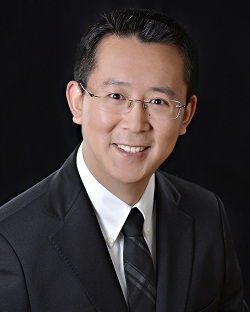Research Awards
Dr. Hang Yin
Regenerative Medicine Program
Winner of the Dr. Ronald G. Worton Researcher in Training Award
 When it comes to timing, serendipity is sprinkled throughout the early scientific career of Dr. Hang Yin.
When it comes to timing, serendipity is sprinkled throughout the early scientific career of Dr. Hang Yin.
The talented young researcher started down the path of scientific inquiry in his final years at one of China's best medical schools in his hometown of Beijing. He had the option of moving toward medical practice or taking the path of research. He chose research.
"I always loved biology and I feel that medical research can address really important questions," said Dr. Yin, who is a postdoctoral fellow in Dr. Michael Rudnicki's laboratory.
Dr. Yin was then given the opportunity to do his PhD at Duke University. In 2001 under Dr. Haifan Lin (now the director of the Yale Stem Cell Center), Dr. Yin started exploring the emerging world of small RNAs in stem cells of fruit flies.
In 2004, before the advent of high-throughput sequencing, he used a traditional cloning approach to identify a new type of small RNA. When high-throughput sequencing came along in 2006, it became clear that these small RNAs were not junk, as many had thought, and were actually activating or suppressing certain genes. He published his discovery in Nature.
After obtaining his PhD, Dr. Yin decided to pursue his real passion in human biology. He saw it as a challenge, but was convinced he should do it and that he should stick with stem cells. "So, I started looking for labs in Canada because I knew it was on the leading edge of stem cell research," said Dr. Yin.
"I chose Dr. Rudnicki's lab based on the brilliant science I saw happening here," he added.
Just five minutes after sending his curriculum vitae to Dr. Rudnicki, he received a reply. "When can you come for an interview?" He was surprised, pleased and a little amazed by the speed of the response. At that very moment, Dr. Yin later discovered, his future principal investigator was at a conference listening to his research being presented by his soon-to-be former principal investigator, Dr. Lin.
In Dr. Rudnicki's lab, Dr. Yin started to realize that his passion could become a reality. He used high-throughput sequencing to compare muscle stem cells that were and were not proliferating, finding that a large number of microRNAs were involved. In 2010 he was deciding which microRNA to study further when he read a paper about brown fat, an energy-burning form of good fat. With his list of candidate microRNAs at hand he wondered, "What microRNA could target brown fat?" In about a minute he had determined that microRNA-133 (miR-133) was a good candidate. "It just made sense. I thought, maybe miR-133 can suppress muscle stem cells from turning into brown fat," said Dr. Yin.
After confirming this, he and Dr. Rudnicki decided to take it further — to extend the study from the level of molecular biology and explore how the metabolism of the whole mouse reacted to miR-133. To do this they collaborated with other scientists at The Ottawa Hospital and the University of Ottawa who specialize in metabolism and metabolic imaging. In early 2013, Dr. Yin and the team published a paper in Cell Metabolism showing that obese mice given a single injection to reduce miR-133 levels were protected from obesity and were still burning more energy a full four months later. It garnered great interest from media.
Drs. Rudnicki and Yin are pursuing the science needed to move this exciting finding toward the clinic, in the hope that, one day, it could help address the worldwide challenges of obesity. Dr. Yin may have, indeed, already addressed a really important medical question in a significant way. And he's just getting started.
